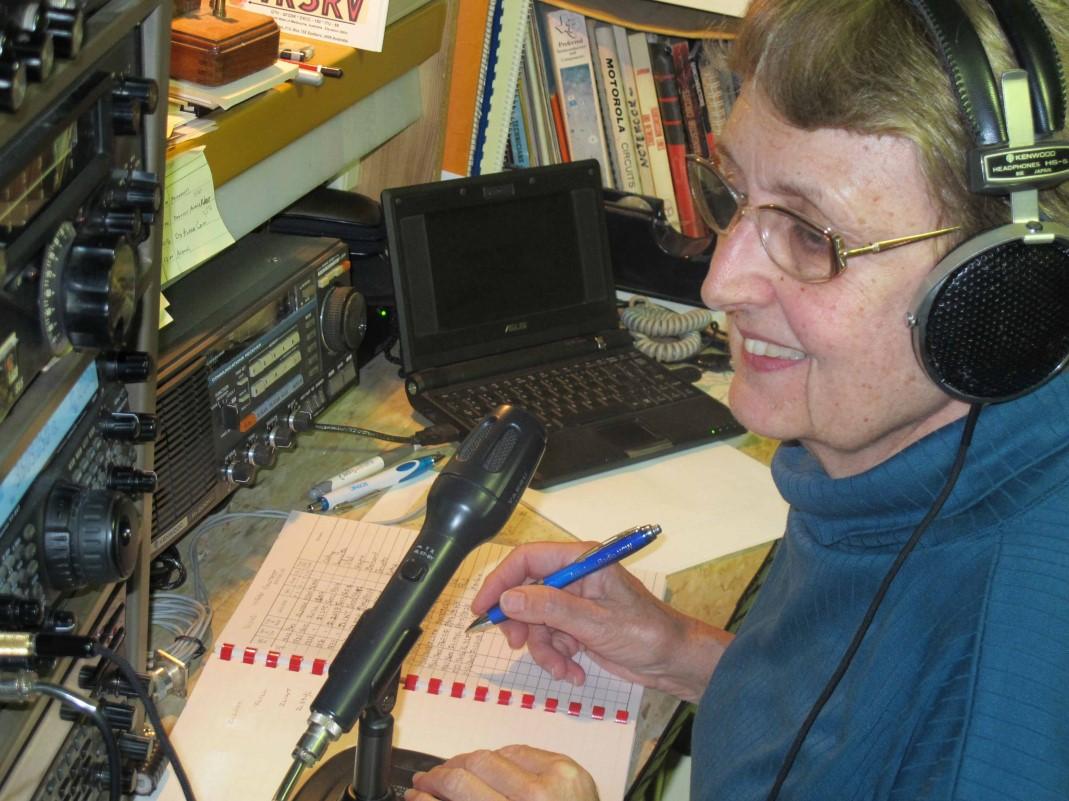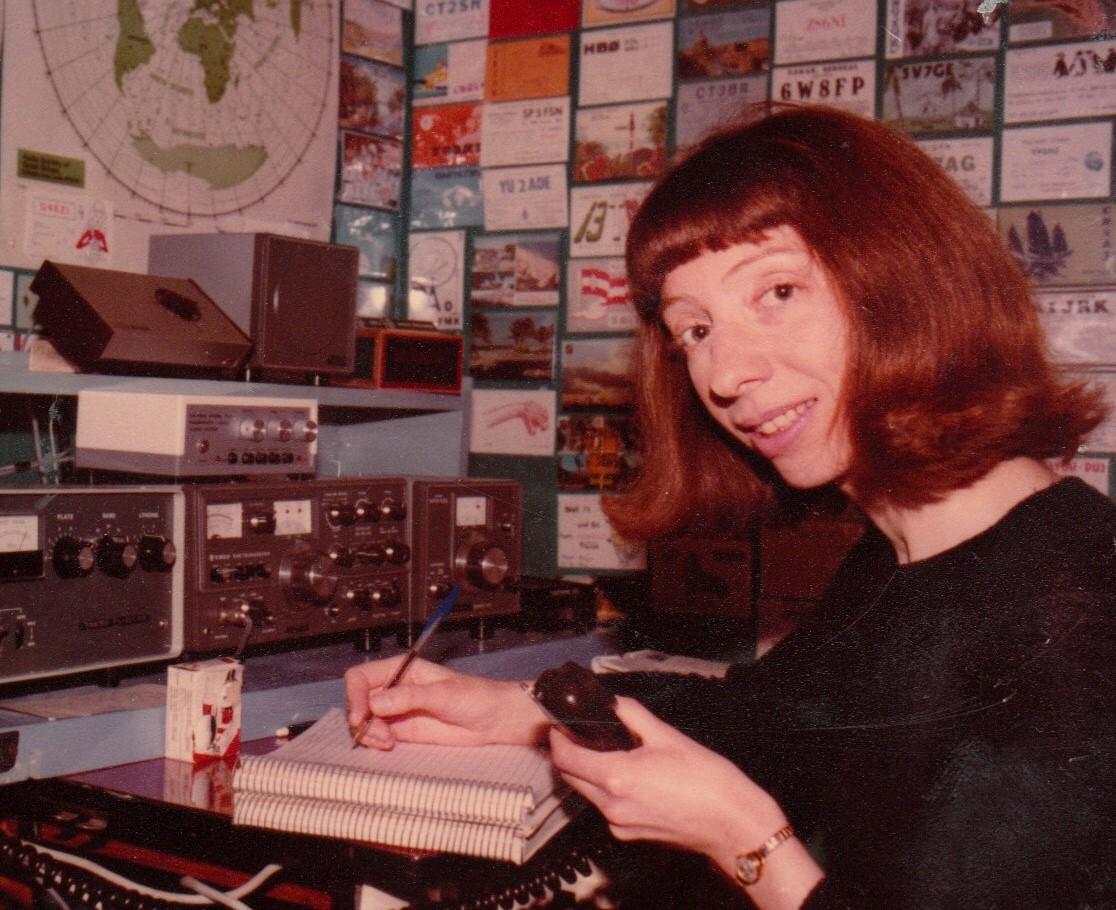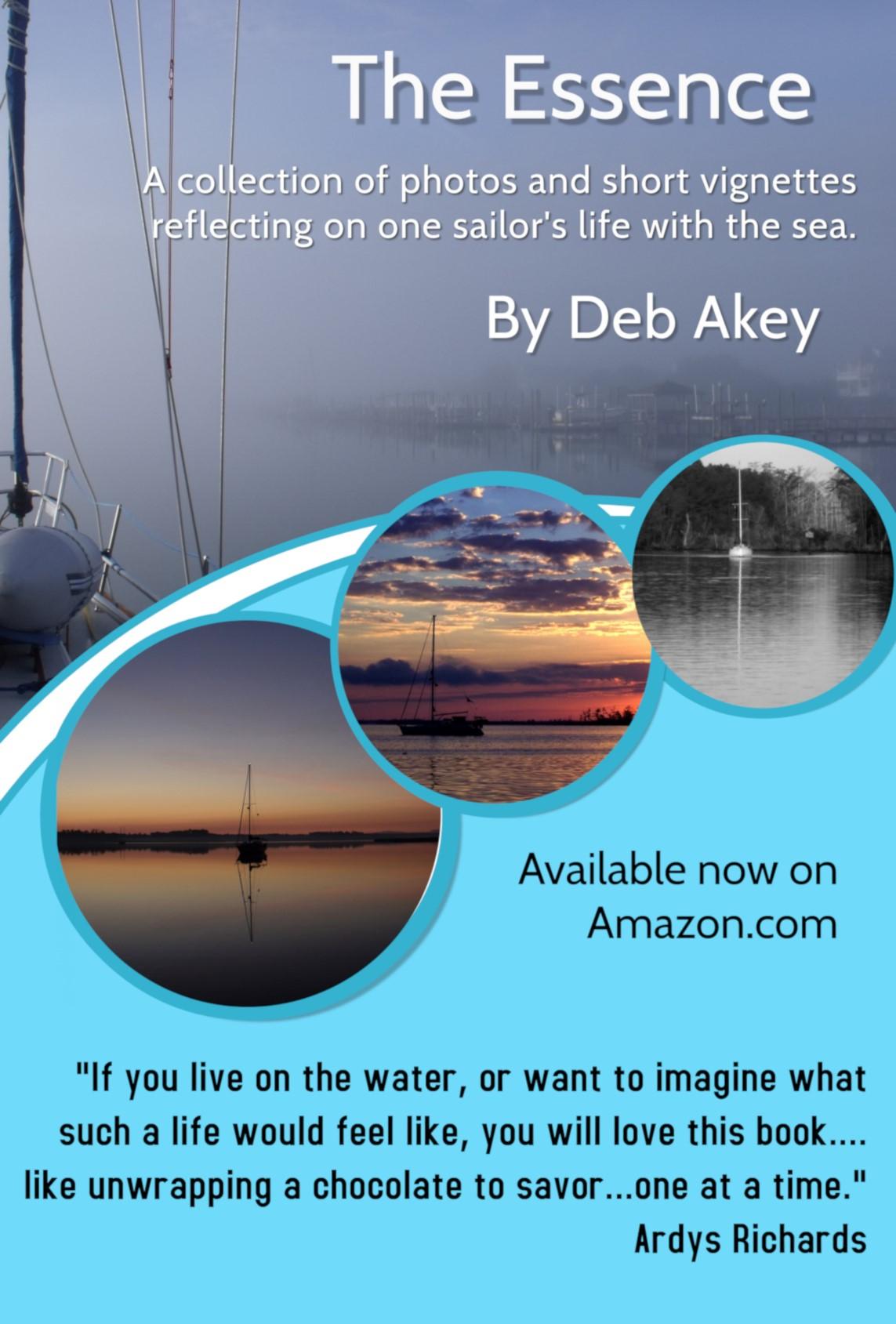
9 minute read
Hamming it up at Sea: HF radio
Hamming it up at Sea

Advertisement
Lyn Battle
Following on from my story about using HF (High Frequency) radio to chat with operators all around the world on the Ham bands... just how do we become “a Ham”?
There are various ways to achieve our amateur radio or ‘Ham’ licence and regulations vary, depending on the country in which you are currently located.
The best thing to do is check with locals to see if there is an amateur radio club nearby. They often run training courses or can point you in the right direction. If you have access to the internet, you can google local training bodies, but it’s always helpful to have a supportive ‘Elmer’ (qualified Ham mentor) to shepherd you along the way; I know I always like to have a sounding board for those silly questions that we seem to be too embarrassed to ask the experts!
The first question usually is: “What’s the difference between ‘amateur’ and ‘Ham’ radio?
The answer: same-same! The technical term is ‘Amateur Radio’, because in the early 19th century days of wired telegraphy, only professionals such as shipping and railway telegraphists used the system. The term ‘ham -fisted’ was used to describe someone with poor Morse-key operating skills. When laymen were granted experimental licenses in the early 20th century, they were ‘amateur’ as
ABOVE: Amateur Radio magazine covers featuring Emma VK2FEMM at JOTA Scouts' Jamboree On The Air (left) and Bron VK3DYF (now *Silent Key) and young boy in buggy (right).
opposed to ‘commercial’. In the cliquey ways of the world, the professionals referred to them with the derogatory term: ‘Hams’, which, in turn, has become a badge of honour. We are now proud of our Ham heritage and, dare I say: “As happy as a pig (Ham) in the mud!”
Gone are the days when you had to learn Morse Code to get your licence, whether you ever intended to use that mode of communication or not, and this has resulted in two things:
1. People who struggled with Morse Code are now finding it easier to attain their license; and
2. More people are now taking an interest in

Jenny VK3WQ.
learning Morse Code as it’s no longer compulsory. They are enjoying the challenge of learning what is more or less a ‘new language’ and possibly the only secret code permitted to be used over the airwaves!
Morse Code, or CW as it is known (Continuous Wave as opposed to the type of modulated waves used for spoken word or digital modes), is also a very handy skill to have in the current times of poor solar/HF activity. It’s a bit like when you only have ‘two bars’ of service on your mobile phone –enough to send a text but not enough to make a voice call. It also requires less power than talking and is very popular with those Hams who head off to remote islands on “DXpeditions”, as they can carry less bulky equipment.
But we girls enjoy a chat, so back to that license...
The study required to attain a Ham radio license can be broken down into two major parts: theory and regulations.
Theory covers the what and how of what radio waves are, how they are propagated around the world, how your radio set makes this magic happen, and how to control it. An amateur radio licence is not just a ticket to talk, it qualifies you to build and operate your own radio station, teaches you how to troubleshoot, and repair things like broken wires and poor connections. Oh, the thrill of knowing how to use a multi-meter to



Elsa VK6FZEB, one of the newest licensed young Hams in Australia.
pinpoint a broken conductor on a vertical antenna, peel back the insulation, sandpaper away the salty green bits, solder on a new bit of shiny wire, tape it all up, and Bingo! You’re back on the air. No need to pull into port and order an expensive new antenna!
Regulations cover the when and where of usage of the radio spectrum, which is shared by many users from TV stations to GPS devices and microwave ovens!
The International Telecommunication Union (ITU) oversees the system, and national governments regulate technical and operational characteristics of transmissions and issue individual stations licenses with an identifying call sign.
Hams just use a small part of the spectrum, but we have to be careful to not interfere with other users. We also need to adhere to correct on-air procedures. In the same way it is important for yachties to know the difference between making a Pan Pan call or an actual Mayday –Hams also have standard procedures which make it easier for everyone to communicate smoothly. When conditions


Gill VK6YL (now SK) with her little red car.
are not clear, there is a set of shorthand terms called the ‘Q Code’, which makes it easy to exchange information efficiently. “What is your QTH?” asks for your location and you respond, “My QTH is... QSL?” If the other operator copied it all clearly, they reply, “QSL”. So, each Q code can be both a question and a response. It can make for short snappy exchanges when radio conditions are poor and you need to get the information through clearly and concisely.
When conditions are good, extended conversations can be had; these are referred to as ‘Ragchews’, and are great sources of information and entertainment on long ocean passages. Remember the various Ham radio ‘Nets’ mentioned in our previous article (SisterShip Jan 2020 issue), such as the ANZA DX Net that Jeanne Socrates checked in to regularly during her solo circumnavigation? Jeanne is now circumnavigating Australia by land, meeting up with some of the Hams who kept her company on air during those long hours at sea.
Sat phones and mobile apps might be useful for critical comms or when in port with free wi-fi, but they’d be far too expensive for chatting at sea. Ham radio opens up the world to you on long passages. Unlike maritime nets that only operate at certain times of the day, there is nearly always a Ham on air somewhere in the world, and ‘Maritime Mobile’ stations are always popular. You can get up to date information on local weather, traditional customs, and port services. In most countries there is no age limit to earn your license, neither lower nor upper limits –so long as you can demonstrate proficiency. In most cases, there is recognition of prior learning.
There are more male than female operators, but I would not say that it is a heavily male dominated hobby, as most Hams are courteous by nature and female operators are made most welcome on air. Our gregarious nature and naturally higher pitched voices
Diana G4EZI (now SK*).


make us naturals for this hobby. I often chat with a Ham couple in South Africa (retired yachties with a mid-Atlantic sinking in their ‘Sail Tales Locker’, and publishers of their local coastal sailing almanac). It is amazing the difference when they hand over the mic –Sue’s voice cuts through much clearer than Tom’s. In fact, male operators chasing that rare DX station will often deliberately pitch their voice a little higher to break through the pileup of stations calling –a technique we jokingly refer to as putting on your ‘Tight Undies’! It works!
Being a female Ham comes with all sorts of perks, not least being the old Morse Code shorthand term YL which stands for Young Lady, regardless of our age! Whereas male operators are referred to as OM, or Old Man! Love it!
Callsigns can be fun. A Ham callsign is a very personal thing and identifies you just as much as your personal name. My callsign VK4SWE is easily recognisable on air as Lyn from Sweers Island. The prefix format is fixed, with the first letters signifying which country licensed you, for example EI for Ireland, VK for Australia. The number narrows down your region, VK4 is Queensland (just like the post codes). Some countries allocate random callsigns but others let you choose your suffix from whatever is available. Most Hams seem to select their initials; I chose SWE for
There are some organisations that offer training assistance for YLs, including our Australian Ladies Amateur Association (ALARA), which offers generous grants to young girls and women keen to attain their licence.
Once you’ve passed your proficiency tests, got your license and callsign, you can have fun selecting equipment. Not all marine radios come fitted with the Ham frequencies, so make sure when you buy your radio, especially if you purchase overseas or online, that you show your licence and have it ‘opened’ for the Ham bands. Also, make sure that you select a brand that varnishes their PCB tracks, to protect it from salty air corrosion. Antennas can be incorporated into your backstay or vertical antennas can be used. Digital modes are becoming more popular so you can connect your laptop and experiment with those. Low power handhelds can be taken ashore and used through repeaters when in range. The sky –or should I say ‘ionosphere’ –is the limit!
Looking forward to hearing some of you on air!
“33” (The international greeting between female Hams),
Lyn VK4SWE


ABOVE: Lyn Battle.
MORE INFO LINKS:
ALARA: www.alara.org.au
Online Radio & Electronics School: www.res.net.au
* Silent Key or SK: Passed away.


LYN BATTLE has lived for over 30 years on Sweers Island, in Australia’s Gulf of Carpentaria, where she runs a small fishing lodge with her husband Tex, and they enjoy cruising on their aluminium motor cat Trim during holidays. She was born in Ireland, on site at Malin Head Wireless Station, where her father worked as a (professional) radio operator. He never took amateur radio up as a hobby, but he did teach her the phonetic alphabet and how to solder! Lyn studied with the Online Radio and Electronics School, failed the Morse test twice but gained her Advanced Licence in 2004. Many would say she hasn't stopped talking and tapping since!














